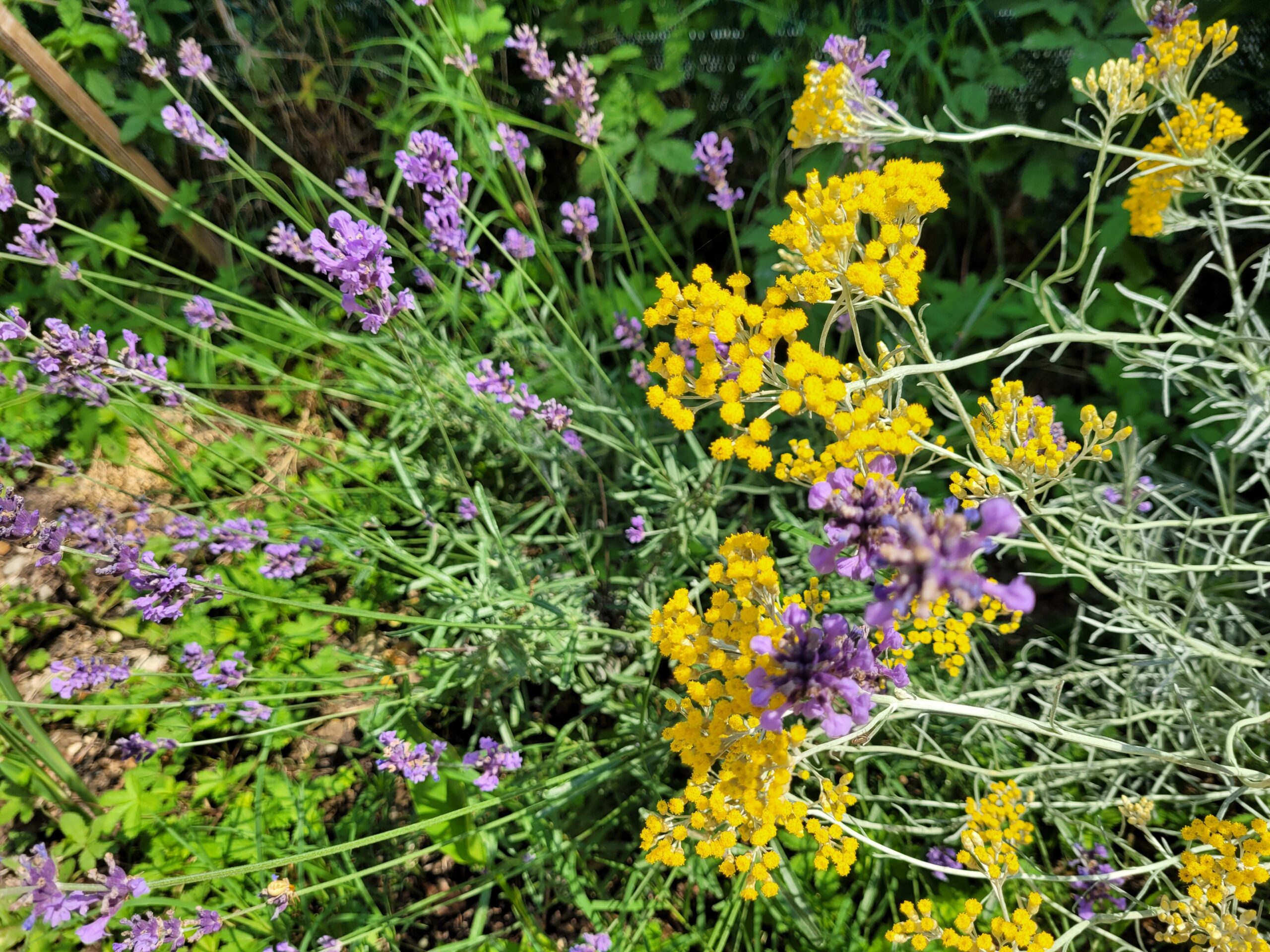It is told in the ancient Greece and in Roman Empire people braid Helichrysum branches to worship the divinities. Its name means “the gold sun” and everyone knows its medicine properties. Recently the Helichrysum italicum has become an interesting crop because of its cosmetic and medicinal uses, while in the past, only Helichrysum Arenarium has been officially approved by the European Medicines Agency (EMA) as a herbal medicinal product.
Helichrysum Italicum is a perennial aromatic subshrub. It is especially found on sunny, rocky slopes and sandy areas, from the sea level up to 1700 m. The species consist of several closely related subspecies which easily create hybrids. It is highly polymorphic both in the morphological and chemical traits. The raw materials collected from this plant are inflorescences and aboveground organs.
Both raw materials are rich in essential oil and phenolic compounds.
The traditional folk medicinal usage includes its application in the treatment of colds, cough, inflammation and liver and gall bladder disorders. Preparations made from this plant, in the form of infusions, decoctions, juices, vapors or powders are administered through ingestion, inhalation or topically. Recently, special attention has been paid to the tissue regeneration and anti-inflammatory effects of the Helichrysum Italicum essential oil, which has resulted in its application in the cosmetic industry as an anti-aging and potentially wound-healing agent in reconstructive surgery.

This growing interest, especially in the cosmetic industry, has resulted in rising demand for the Italicum raw materials. Furthermore, the high price of the raw material, especially essential oil, prompted producers to cultivate the plant.

Recent studies [1] are interested in assessing the chemical profile as well as antioxidant and antibacterial potential of the species cultivated in the temperate climate. Due to the climatic requirements of the plant, related mainly to high temperature and insolation, as in the Mediterranean regions, the trials to cultivate Helichrysum Italicum in the cooler climate, as in Central Europe, have not been undertaken so far. On the other hand, climate changes clearly observed in recent years, manifested in the region by higher average temperatures in winter and summer, and a longer growing season, are an encouragement to undertake such actions.
These studies [1] shows that the raw materials have been comprehensively compared with respect to the chemical profile of their essential oils and phenolics, followed by their antioxidant and antimicrobial activity. It was shown that the inflorescences were characterized by a high content of essential oils and tannins while the herb of flavonoids and phenolic acids. In the essential oil from the inflorescences, the dominants were neryl acetate and nerol while from the herb neryl acetate and α-pinene. In both raw materials, the contents of eight phenolic compounds were detected, with cichoric acid as a dominant. Its content was twice as high in the herb as in the inflorescences. Regarding biological activity, extracts from the herb indicated higher antioxidant potential, but bacteriostatic power was higher in the case of inflorescences.
The above-mentioned differences noticed between Helichrysum Italicum raw materials should be taken under consideration when their industrial application is concerned. Obtained results may be developed in future investigations on the Italicum regarding both its cultivation aspects and usage in phytotherapy as an antimicrobial agent.
References:
[1] Antioxidant and Antibacterial Activity of Helichrysum italicum (Roth) G. Don. from Central Europe – Weglarz et al; Pharmaceuticals, 2022, 15, 735.






This could be a very interesting crop to grow in the Mediterranean area. It sounds to be also adaptable to the changing climate conditions.
Thank you for your comment. Seeing the interest on this precious crop, I’ll soon report new intersting insights about a “green” use of the Helichrysum Italicum.